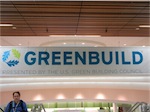A main issue with household paint is that many ingredients are added to improve the look, longevity and ease of application of the paint. Some of these ingredients are volatile organic compounds (VOCs). According to the EPA, VOCs can cause respiratory, skin, and eye irritation; headaches; nausea; muscle weakness; and more serious ailments and diseases. Formaldehye is one of the common VOCs that is carcinogenic. VOCs evaporate in room temperature. For indoor applications even airing a house is not enough to remove all the VOCs, as low level emission continues to take place for a fairly long period of time.
EPA and many State Air Quality Districts have instituted regulation to reduce amount of VOCs used in paint products. The current EPA limit is no more than 100 grams/liter for flat paint, and 150 grams/liter to 250 grams/liter for other paints. California’s new limit, effective Jan 2011, is 50 grams/liter for flat paint; and different limits ranging between 50 grams/liter to 100 grams/liter for other paints depending on the Air Quality District. Product should carry certification labels, some of these are manufacturer declaration, others are independent third party certifications. Three of the third party certifications are Green Seal, GreenGuard and Scientific Certification System (SCS). See Pharos.Consider these carefully before buying the paint.
Exterior paints are less likely to affect indoor air quality. It is still prudent to choose paints with low to zero VOC and hazadardous materials to reduce overall environmental pollution.
Regulations for other coatings, such as floor coating, varnish, etc, can be found at EPA’s and local Air Qaulity Districts’ web sites.
Zero VOC Paint
Some paint manufacturers also market “Zero VOC” or “No VOC product. This is all fine and good. Technically, zero means within the tolerance or accuracy of measurement instruments. Hence the paint may still contain a very small amount of VOC, which, according to the EPA, is allowed to be up to 5 grams/liter.
Recycled Paint
Some manufacturers also market “Recycled Paint”. These are typically made using in part left overs (proportion depends on the product). It is a good way to avoid waste. Keep in mind that the product still has to meet the VOC limit you choose. These can be great choices for outdoor applications. Again check the Materials Safety Data Sheet and the Product Description Sheet.







